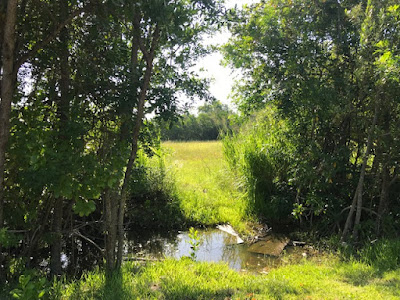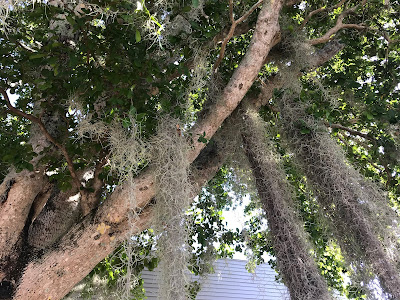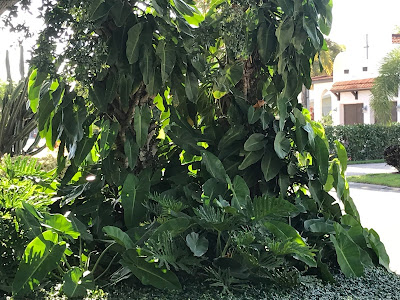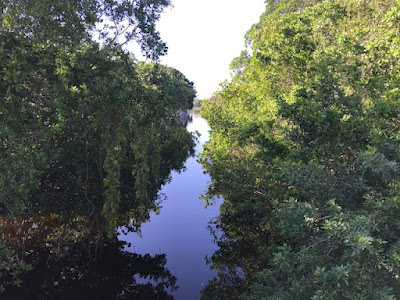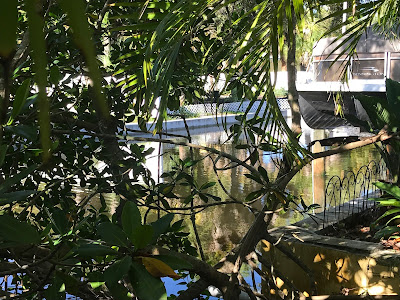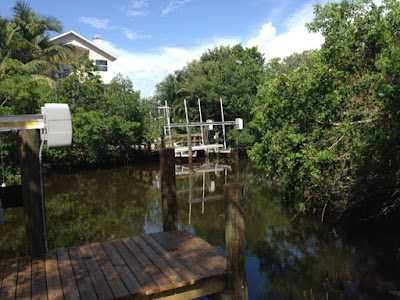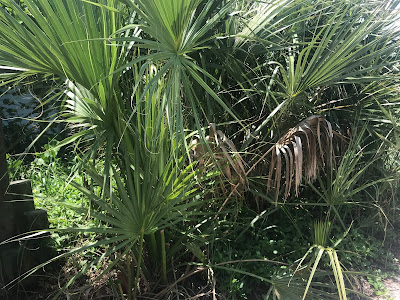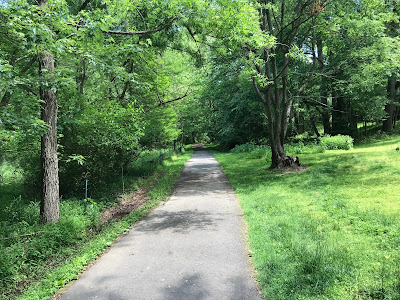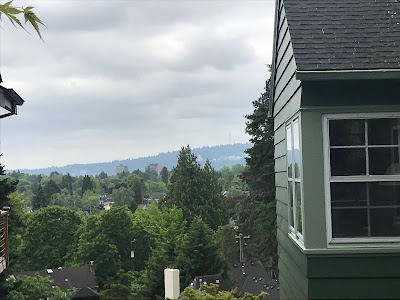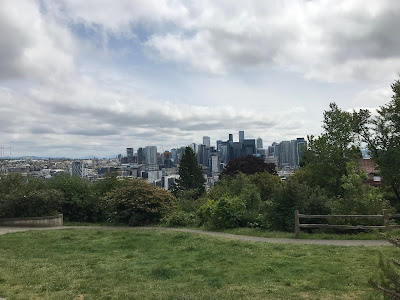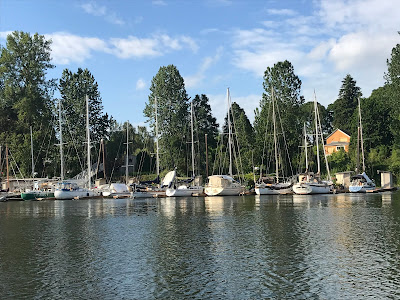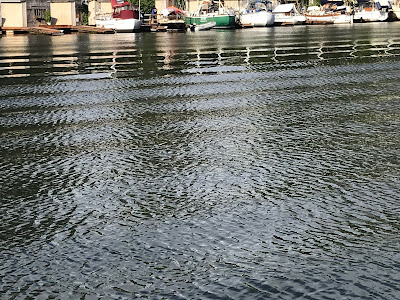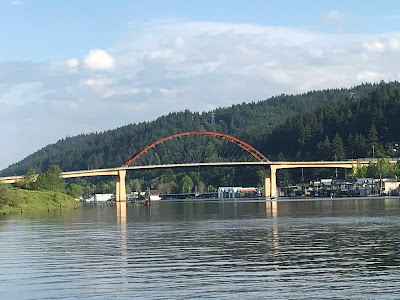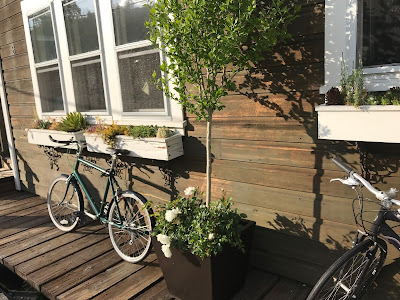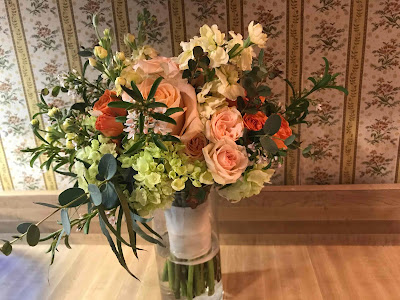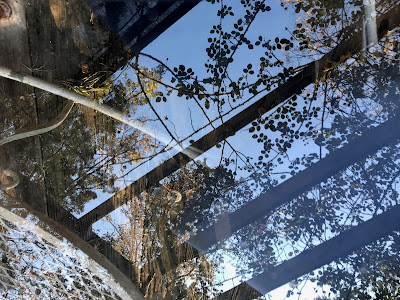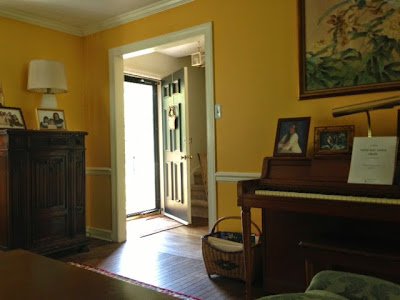The Canals
The west coast of Florida is not only sun-kissed and sugar-sanded but some of it (my part of it, at least) is laced with a series of narrow canals that make for crazy walking but lovely viewing.
I ran into these canals the other day on the way home from the beach. Thinking I could take a shortcut I found myself going in circles on what was, in effect, a peninsula, bounded on all sides by these watery avenues.
No cut-throughs here. Instead, languorous streams tucked behind walls of palmetto, elephant ear, bougainvillea and birds of paradise. They move slowly; I’m trying to learn from them.
Red Tide

Yesterday, the beach was emptier than I’ve ever seen it. Figuring it was due to the high wind — the retreating edges of Tropical Storm Fred, by then pushing north to the panhandle — I took off walking as I usually do, tennis shoes slung over my shoulder, sinking my toes in the sand, warm water flowing up to my ankles as I skirted the waves.
It was a perfect beach walking day — except it was anything but.
I had heard about Red Tide, an algae bloom that kills fish and other wildlife, but mistakenly thought that if you couldn’t see it, it wasn’t there.
But then the cough I had noticed earlier became more insistent and my eyes watered so much I could scarcely keep them open. Could Red Tide hurt humans, too?
The lifeguard station was farther up the beach, and by the time I reached it there was another coughing, sneezing, watery-eyed person asking the same question.
“It’s really bad today,” said the guard, who was wearing one of those bandana masks that’s not allowed on airplanes but which seemed to be helping him cope with Karenia brevis, the organism that was causing the symptoms.
When I looked closer, I noticed the little red flag flying from the lifeguard stand. Red Tide: I have a healthy respect for it now.
(Photo: Courtesy ocean.si.edu)
The Difference
Here at the beach for a week, I’m soaking in the landscape, as I always do. It’s not just the sun and the sand (which I’ve seen little of yet due to my arriving at the same time as Tropical Storm Fred) — but also the air (humid, with a salt breeze), the twisted banyan trees, the rubbery leaves of the palmetto frond I found floating in the pool yesterday.
Sights and textures like these free up the mind, set the imagination spinning. I wonder about lives lived entirely amongst such things and how they would differ from mine, tucked into the rolling roads and greenery of the Virginia Piedmont.
I have no answers to this question, and surely a life is much more than the sum of what the eye sees, what the skin feels. But in the grand scheme of things, these make a difference, I’m sure.
A Walking Trifecta
I’m filing this under the category of “books and book reviews I wish I’d written” — a single article in yesterday’s print copy of the Washington Post that covered three books on walking — a trifecta of pleasure that has added three tomes to my must-read list.
In Praise of Walking: A New Scientific Exploration, by neuroscientist Shane O’Mara, describes the many benefits of walking, most of which I know but all of which I love hearing about again: how it helps protect heart and lungs and even builds new cells in the hippocampus.
In First Steps: How Upright Walking Made Us Human, paleontologist Jeremy DeSilva explains the importance of bipedalism to human exploration, how it made possible the longer legs and shoes that have taken us to colder climes and, ultimately, even the moon.
Finally, the reviewer, Sibbie O’Sullivan, discusses Healing Trees: A Pocket Guide to Forest Bathing, which explores the Japanese concept of shinrin-yoku, immersing oneself in nature:
“Every page of ‘Healing Trees’ reminds us how separated from the world, from nature, from the trees, we’ve become,” writes O’Sullivan, who injects herself beautifully into the essay by describing her own walking, falling and resultant knee surgery. “Too often we take walking for granted,” she writes, “but we shouldn’t.”
From the Top
It’s been two weeks since we returned from our Northwest jaunt, and I often catch myself looking through photographs when I have a spare minute. Which means that I’ve noticed trends.
For instance, I was often pointing my phone camera at flowers: roses, rhododendrons, formal gardens, cottage gardens. You would think I have no blossoms whatsoever at home, which is not the case.
But also, whenever possible, I snapped photos from ridges and hilltops. Luckily, both Portland and Seattle cooperated, providing expansive views where I least expected them, like the one above — which appeared out of nowhere on a walk — and others (like the one below) where I huffed and puffed to reach it.
Reliving these vistas now, I feel like chucking it all and buying a piece of land in the Shenandoah. It can be small, it can be humble — all it needs is a view.
A Walker on the River
After days pounding asphalt and concrete, we had the luxury of a few hours on the water, where legs are for the most part irrelevant. We left the floating home mid-afternoon for a slow cruise on the Multnomah Channel, a tributary of the Willamette.
We cruised under the Sauvie Island Bridge, passed sailboats and motorboats and a contraption that looked like an elliptical on water. There was an osprey nest off our starboard side and an abandoned restaurant farther down. Mostly there was sun and stillness and companionship. When we landed, the light was golden.
A Constant
Morning on the Hunter’s Woods Trail: Mozart in my ears, details in my brain, details I hoped would filter away like a dusting of snow through trampoline mesh. And the rhythm of footfall did clarify the day; it reminded me of what is most important, which is to live fully when and where we are.
I was aided in this by the appearance of wildlife: first, a fox sauntering down the trail ahead of me and then, on the drive home, a wild turkey beside the road, bobbing its head as it fled into the woods.
The critters pulled me into the present and away from the fact that this is a departure day, which is not nearly as nice as an arrival day.
But the warmth is finally here, and the day is as perfect in its way as the cold, windy Thursday that brought her here. Both days are required, one for coming, the other for going — with the walks a constant between the two.
Blue Sky
In group meditation, we are visualizing creativity as blue sky and a spark of clear spacious light that expands and grows until it covers the universe.
This is easier said than done. Into the mind comes the grocery list, the calendar, the need to notify team members that I’m off today. Blue sky vanishes behind clouds of my own silly making, which is what it always does. Because clouds are almost all of my own making.
But today I’m stepping away from calendar and duties, hoping to spend as much time as possible outside, under the real sky, which is, as it turns out, mostly blue today.
Open-Door Policy
It’s a drizzly morning filled with bird song. Water beads on the just-sprouting branches of the climbing rose and small puddles collect on the aging deck floor.
I sit on the couch just inside the back door, which is open to the moisture and the song, which matches the morning in its timbre and intensity.
It’s often like this in the warm or even warmish months: back door open to breeze and heat and whatever else is out there. That we’ve had mice and snakes and an occasional bird is part of the package. I’ll accept them if it brings us closer to the landscape. It’s my own open-door policy.
(The only open-door shot I could find is of the front door. It’s often open too, but it has a storm door.)
